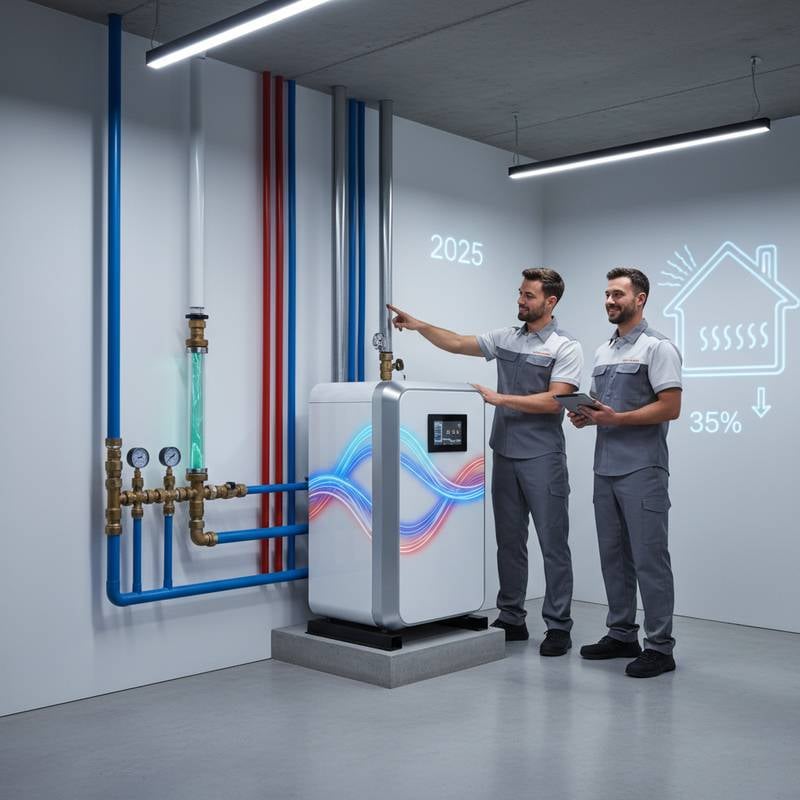Cut Energy Bills with 2025 All-Electric Tax Credits
Electric bills often arrive as an unwelcome surprise, rivaling other major household expenses. Homeowners increasingly turn to all-electric systems to address this issue effectively. The latest all-electric tax credits provide a pathway to upgrade heating, cooling, cooking, and related systems while preserving financial resources.
These incentives encourage a shift toward efficient electric technologies. Homeowners can modernize their properties without excessive upfront investment. The result includes lower ongoing costs and enhanced home performance.
Key Benefits of All-Electric Upgrades
- Federal incentives reduce costs for electric appliances and systems by up to 30 percent.
- Heat pump installations lower heating and cooling expenses by 25 to 40 percent on average.
- Induction cooktops consume approximately 10 percent less energy than gas models and prepare meals more quickly.
- Multiple upgrades, including HVAC, water heating, and insulation, yield payback periods under five years for many households.
Why Electrification Delivers Value
Electrification extends beyond environmental considerations to offer clear financial advantages. Electric appliances, especially those drawing from renewable sources, minimize utility expenses and elevate indoor air quality. This transition aligns practical benefits with long-term savings.
The U.S. Department of Energy reports that heating and cooling represent almost half of typical home energy consumption. Gas furnaces and water heaters lose efficiency through heat venting and combustion inefficiencies. Heat pumps, however, transfer heat efficiently, achieving 200 to 300 percent efficiency ratings.
Integration with solar panels or community renewable programs approaches net-zero energy use for households. Current tax incentives enhance accessibility, making these improvements feasible for more families.
Overview of Available Credits
All-electric tax credits target both prompt installations and sustained efficiency gains. Homeowners benefit from three primary categories of support.
| Upgrade Type | Typical Credit or Rebate | Average Cost Offset | Example Systems |
|---|---|---|---|
| Electric HVAC (heat pumps) | Up to 30 percent of cost | $2,000 to $8,000 | Ducted or ductless mini-splits |
| Electric Water Heaters | Up to 30 percent of cost | $600 to $2,000 | Heat pump models |
| Electric Cooking and Laundry | Up to 30 percent of cost | $100 to $1,200 | Induction ranges, electric dryers |
Incentives cover new setups and eligible retrofits alike. State programs frequently supplement federal offerings, potentially doubling savings. For instance, replacing a gas furnace with a high-efficiency heat pump might lower a $10,000 project to about $5,000 after incentives.
Comparing Upgrade Options
Selecting appropriate systems requires clear comparisons to guide decisions effectively.
| Feature | Heat Pump HVAC | Heat Pump Water Heater | Induction Cooktop |
|---|---|---|---|
| Annual Energy Savings | 25 to 40 percent | 20 to 30 percent | 10 to 15 percent |
| Typical Lifespan | 15 years | 12 years | 10 years |
| Maintenance Level | Low | Low | Very low |
| Indoor Air Quality Benefit | High | Moderate | High |
These options decrease fossil fuel dependence and operational costs. Homeowners typically begin with high-energy systems like heating and cooling, then proceed to water heating and cooking appliances.
Financial Returns from Upgrades
Returns vary based on local energy rates, climate conditions, and usage habits. Research from the American Council for an Energy-Efficient Economy indicates average annual savings of $900 to $1,200 for households adopting heat pumps and induction cooking.
Adding insulation and smart thermostats can elevate total savings to nearly 50 percent of prior utility bills. Over equipment lifespans, these changes accumulate to substantial avoided costs, often tens of thousands of dollars.
A Midwest homeowner, for example, halved monthly bills by installing a variable-speed heat pump in place of an old gas furnace and switching to an induction range. Tax credits offset nearly one-third of expenses, achieving payback in under four years.
Ensuring Broad Accessibility
Tax credits accommodate diverse income levels, with enhanced rebates for lower-income households and percentage-based support for others. Renters gain indirect advantages as landlords utilize incentives for property improvements.
Utilities provide zero-interest financing or on-bill repayment options, spreading costs across energy statements. Paired with rebates, these arrangements eliminate the need for large initial payments.
For multi-project plans, prioritize based on impact. An energy audit identifies optimal starting points, such as sealing drafts and insulating walls, which amplify new system efficiency and long-term savings.
Steps to Launch Your Upgrade
-
Arrange a Home Energy Assessment
Certified professionals evaluate inefficiencies and suggest credit-eligible improvements. -
Focus on High-Impact Areas
Target heating, cooling, and water systems for maximum savings potential before addressing appliances. -
Investigate Local Incentives
State and utility programs often layer additional rebates atop federal credits for greater reductions. -
Select Certified Installers
Choose contractors accredited by ENERGY STAR or the Building Performance Institute to guarantee efficiency and rebate qualification. -
Document All Details
Retain receipts, model specifications, and efficiency data for tax filing purposes.
Experiencing Daily Benefits
Installed electric systems alter home dynamics noticeably. Heat pumps deliver consistent warmth without the uneven bursts associated with gas units. Induction cooktops provide rapid, precise heating while surfaces remain safe to touch.
Maintenance simplifies without combustion components or gas lines to manage. Routine tasks involve filter changes and coil cleaning, keeping effort minimal.
Electric operations prove quieter overall, fostering serene environments. Steady temperatures and lack of combustion byproducts enhance living comfort significantly.
Advance Toward Energy Independence
All-electric home transitions yield financial and ecological gains in equal measure. Recent tax credits align costs with these advantages effectively. Each step forward secures reduced expenses, improved air quality, and increased self-reliance in energy use.










